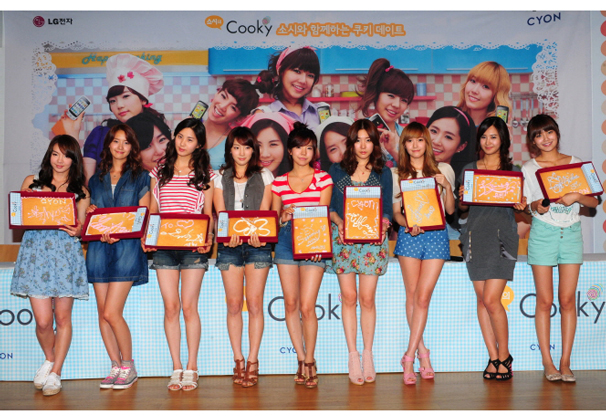
Decades ago, we would not have seen Americans idolizing South Korean pop stars and actresses alongside our own national starlets. But thanks to the Internet, people everywhere are following Korean pop culture and the flawless faces that headline it.
Music groups like Girls’ Generation have achieved international fame not only by performing and releasing albums in various languages and countries but also in large part through international word-of-mouth and the sharing of online videos.
K-pop now has its own chart on Billboard’s website, and there are numerous English-language Korean pop culture and beauty websites. BB cream, made popular by Korean celebrities, has spread to American markets as well, and users of Korean brands such as Skin 79 and Missha still claim their superiority over Western copycats.
Most K-pop boy bands and girl groups are arranged by record labels — much like their American counterparts of the 1990s — and their images tend to be as carefully engineered as the music itself. Plastic surgery is not uncommon. In fact, K-pop has been suggested as the cause for a recent spike in adolescent cosmetic surgery in South Korea.
Olga Fedorenko, an NYU professor of East Asian studies, focuses her research on socio-cultural anthropology and Korean studies. She sees that the South Korean celebrities closely monitor their physical appearances to increase their fan base.
“Perfecting one’s appearance via plastic surgery is on the same continuum as maintaining a fit body through exercise,” Fedorenko said. “A failure to take care of one’s looks is thus often perceived as a failure of self-discipline and
self-care, and thus a signal that the ‘not beautiful’ individual is deserving of lesser social opportunities.”
Thomas Looser, a professor of East Asian studies, sees K-pop beauty standards as relating directly to the overall style of the music.
“The use of plastic surgery, or hair dye or even just clothing are really all just shifting variations within the more globalized expectations of the highly produced, very spectacle-like culture of Asian pop music,” Looser said. “People expect it to be formalized: choreography of dance as much as the formulaic quality of image, and that’s what helps people to identify with it.”
CAS freshman Cindy Li is a fan of K-pop, citing girl group 2NE1 and soloist Lee Hyori as notable figures. Li is well aware of the extreme beauty standards.
“They’re not really popular style icons, as much as trying to adhere to a certain style for their fan base and fashion magazines,” Li said. “There are ideal beauty looks, [such as a] small face, big eyes with double lids, small pointed nose and different body lines, that are emphasized in society.”
Fedorenko points to social, cultural and political influences on Korean beauty standards.
“The demands on celebrities are a reflection of the importance of physical appearance in South Korea, which has been described by local observers as ‘lookism’ and is attributed to various factors — from tough competition for employment and social opportunities to neocolonial veneration of Caucasian features, such as big eyes and fair skin.”
Li agrees and finds the beauty standards harmful in several ways.
“It’s in tune with white imperialism, especially with the increased U.S. geopolitical influence in the Pacific, creating the wish to be as white as possible,” Li said. “Everything is geared toward trying to make them buy products and make themselves look different, not because the individual wants to but because society wants them to.”
Ariana DiValentino is a staff writer. Email her at [email protected].
























































































































































